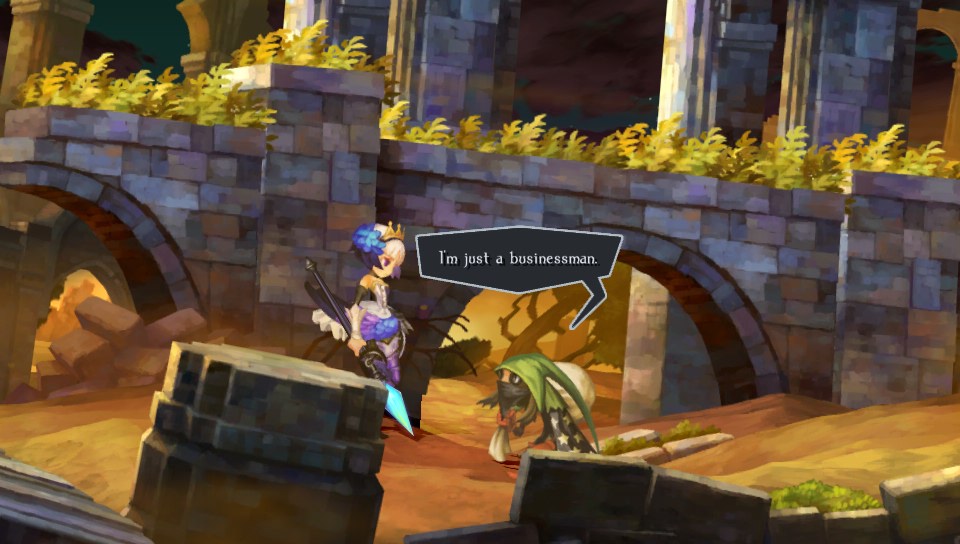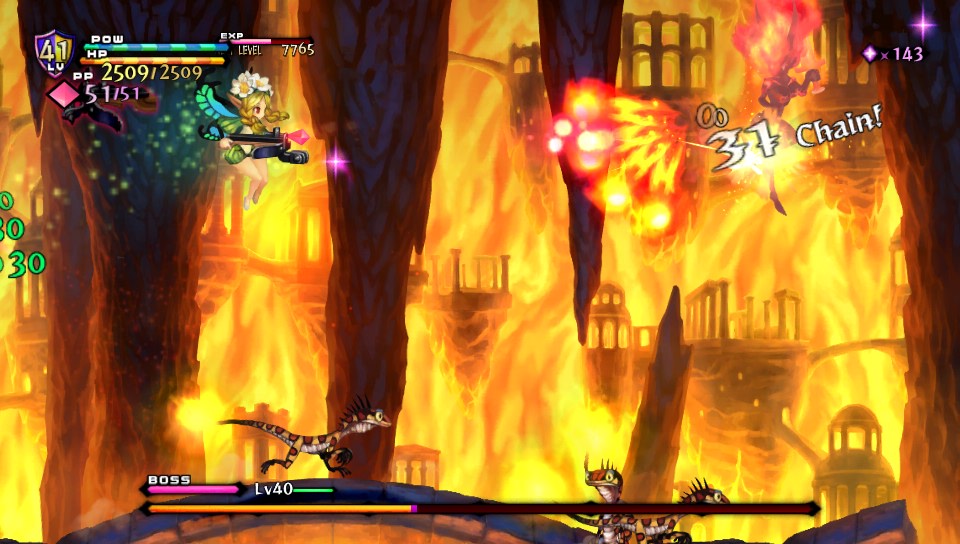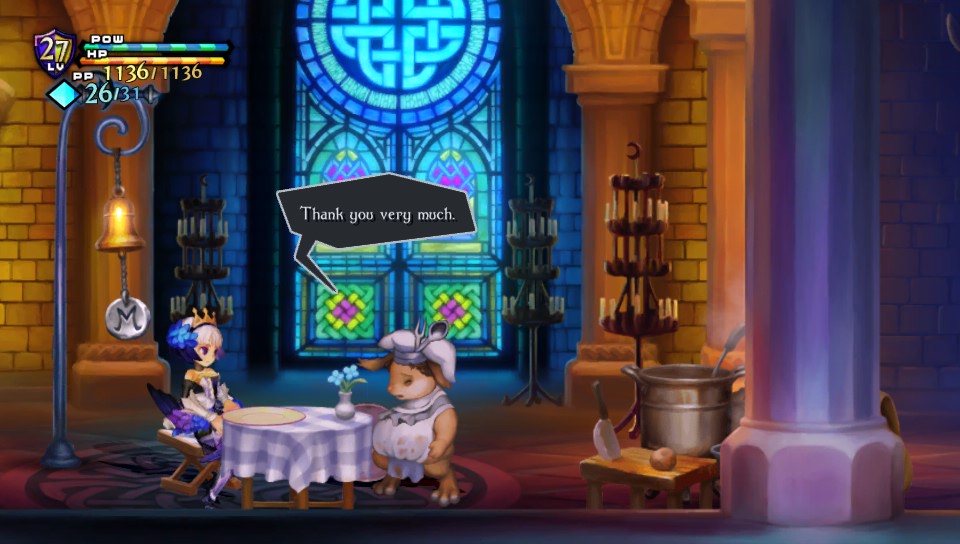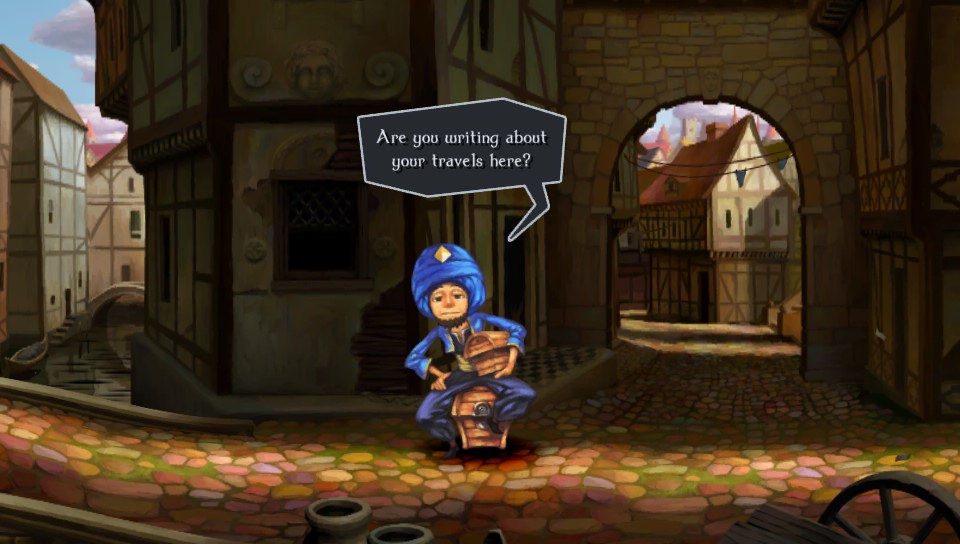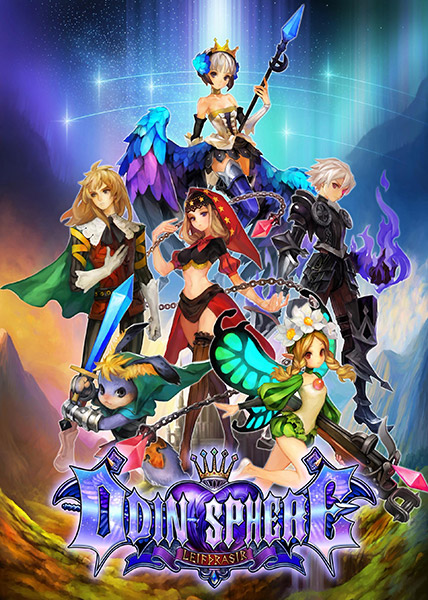
Odin Sphere Leifthrasir – A delight in almost every way
*****
Reviewed July 06, 2016 on PlayStation Vita, PlayStation 4
Leave a comment on Giant Bomb
Disclosure: A PlayStation Vita download code was provided by the publisher for this review
From the moment I started Odin Sphere Leifthrasir, I was stunned by the visual presentation of the game. The gorgeous hand-drawn artwork fuses with a fluid combat system to make one of the most striking looking games I have played in recent years.
The game is set in Erion, a fantasy world featuring several warring factions. Using the framing device of a child reading a series of books, five playable characters, each with their own unique style of combat, take turns in showing a new layer of the story. The story opens with Gwendolyn, a Valkyrie and daughter of a king. For much of this character's section of the game (which was around six hours out of the 30 or so I spent with the game), I wasn't particularly interested in the game's narrative; it was certainly enjoyable enough to play, but never really grabbed me and wasn't driving me through the game.
However, as I got deeper into the game, and starting seeing alternative perspectives from the other characters, I gained a deep appreciation for how the game built a layered tale of fantasy and intrigue. The five character threads are well-woven together, and seemingly unrelated events slowly culminate towards the game's end as the player explores the motivations of the other characters. The end, which features all of the characters in some way, is particularly good. There is a little bit of a difficulty spike (it was the first time I failed a battle more than once), but it felt like a fitting challenge for the end of the game. The story is not particularly ground-breaking in any way, but how it is told, and the quality of the writing, means it is a very enjoyable journey.
Though telling the story from five perspectives does lead to some repetition of combat areas, the combat mechanics are so satisfying that I did not find this to be too problematic. Individual combat scenarios are frequently completed in under a minute, which brings in a steady supply of materials for alchemy and food for eating. This also makes the game well-suited to the PlayStation Vita; a number of times I found myself with ten minutes to kill, which is a perfect amount of time to work through a couple of the combat levels.
On its surface, the game appears to be a fairly straight forward 2D brawler. The basic combat varies depending of the character, some using close-range melee weapons, with other having more range with a whip and a bow. The fundamentals are ultimately the same - repeated hits without taking damage raise the combo meter, and all characters are extremely agile in the air and can juggle foes essentially indefinitely. This style of combat hasn't really clicked for me before, but in this game I took great pleasure in remaining airborne for tens of seconds, dashing between enemies and throwing them into the air with me for a 400+ hit combo. To put it simply, there is a flow to the combat that just feels GREAT. In a way, it felt like it was scratching an itch I didn't know I had.
There is somewhat of a downside to this though. I frequently found that just I was really getting to grips with how a character controls, I came to the end of that character's main arc and moved onto the next character. As they have completely different traversal styles (one can fly, one can swing in a Spiderman-like fashion, as examples), there is a significant re-learning period for the new character. Switching makes sense narratively, and was ultimately more rewarding as I got to experience these different fighting styles, but it was hard to not feel slightly disappointed each time I started over, effectively from scratch.
The addition of two skills trees, one based on level and one based on Phozons gathered by primarily defeating enemies, unlocks a wide range of skills (approximately 10-15 per character) that can be used in battle. I mainly found myself sticking with only a couple of these skills (typically one close-range melee attack and one ranged magic attack), but there is certainly a great deal of depth to the combat for players who want to engage with it and play the game on harder difficulties (I stuck with the normal difficulty throughout the game). The presence of so many skills never felt overwhelming.
The combat is further improved through the use of alchemy, which enables the crafting of one-time use potions from materials bought or purchased on the battlefield. Summoning a whirlwind that sucks in opponents and traps them, for instance, or a cascade of explosions that cause can burn damage over time, means a very timed potion throw can be a game changer, especially against bosses. Some of the more satisfying moments of the game came from choosing to throw a potion into a group of enemies, and seeing my combo meter rocket into triple figures.
The design of the levels also helps the combat. Each level appears flat, but is actually circular in a Defender-like fashion. This prevents the player from getting stuck in a corner behind enemies, enables retreats in order to heal or craft potions, and allow the use of the traversal mechanics (such as the Spiderman-like swing) to quickly get behind enemies for additional damage. The game would work fine without this, but it is an example of the little touches that elevate the game as a whole.
Another example of this is how health and levelling are handled in the game. Some experience is gained through battle, but the bulk will come through eating various foods throughout the game. Seeds can be planted anywhere, and grown using the Phozons gathered in combat to yeild fruit (or lambs, naturally). The fruit and lamb chops can then be eaten to heal and provide experience, removing the necessity to grind in battles. This occasionally can feel wasteful if eating whilst at full health, but food is abundantly provided so this is not really an issue.
There is an interesting trade-off at play here - Phozons can be used both to level up skills or to grow the seeds - meaning that the game can be played in a variety of ways (for example, one could focus on having strong skills, but weaker overall stats, or use the seeds to improve basic states but have weaker special skills).
There are also restaurants to visit, which provide a large amount of experience in exchange for special coins gathered in battle. One of my favourite features of the game is Maury, a travelling chef who can be summoned at various points throughout the game. The way he sets out his movable restaurant after teleportation into the area is emblematic of the game's style, and never gets old.
As previously mentioned, the artwork in the game is simply gorgeous. There is a decent variety of areas, from snowy mountains, to fiery volcanoes, to forest glens, all of which are captivating. The character designs are similarly good; from the small frogs that are barely taller than the grass, to the screen-filling dragons of boss fights, all are well-drawn and detailed. Some of the animations occasionally look a little stiff, but on the whole there is little to complain about visually.
Perhaps one of the most important improvements over the PS2 original is that the performance in the game is substantially increased. 60 frames-per-seconds is targeted, and the PS4 version seems to attain that all of the time. The Vita version of the game will occasionally drop the framerate somewhat, but this was only in particular, and short, areas of the game (such as where a sandstorm, a blizzard, or fog covers much of the screen).
It is difficult to find major criticisms of Odin Sphere. My main issue initially was that the story seemed uninteresting, but as it unfolded (and I became invested), it rapidly improved as the multiple layers revealed themselves. The only thing that really stood out was that the English voice actor for Ingway felt very over-the-top and hammy (almost Liquid Snake-esque), but this may be partly due to the fact I recognise the actor from Persona 3 where he gave a very different performance. Furthermore, none of the music was particularly memorable, but it wasn't bad and was appropriate to the game's setting.
In addition to the remastered game, the game can also be played in Classic mode, which is mechanically the same as the PS2 release but with the remastered graphics. Japanese voice acting can also be used in either mode. A good amount of extra content is also unlocked after beating the game. There is an in-game version of the art book, a lengthy boss rush area (which is the last thing I wanted to do, but is a nice inclusion), and "Xtra New Game", which can be played on the Heroic difficulty setting (maximum HP is capped to its starting value, about 100-200, rather than increasing to 3000-7000 over the course of the game)
Overall, Odin Sphere Leifthrasir is an easy game to recommend, and is a well-crafted experience. Despite some minor flaws and repetition of content, the game as a whole is an excellent package, both for new players and fans of the original PS2 release.
